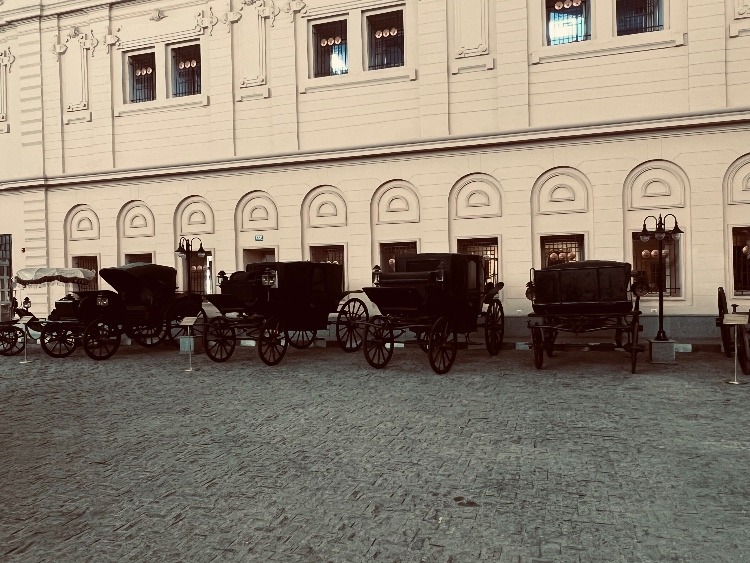The Royal Chariots Museum was built in the middle of the 16th century and is situated on July 26th Street directly beside the historical ancient Abu El Ellah Mosque. The museum was founded under the rule of Khedive Ismail (1863–1879) and is regarded as one of the rarest museums in the world. The major advantage of this museum is how close it is to Wekalet El Balah Market, where you can immediately cross the street from the museum and find yourself surrounded by street merchants attempting to sell you the most well-known brands. Let’s then embark on an adventure to learn more about royal chariots and their various applications.
As we entered the museum, we paid a ticket for 30EGP. The first thing we were met with was a hall filled with carriages that belonged to the reign of Khedive Abbas Helmi and King Farouk I. Some of them were used for leisurely rides and others were used for hunting trips.
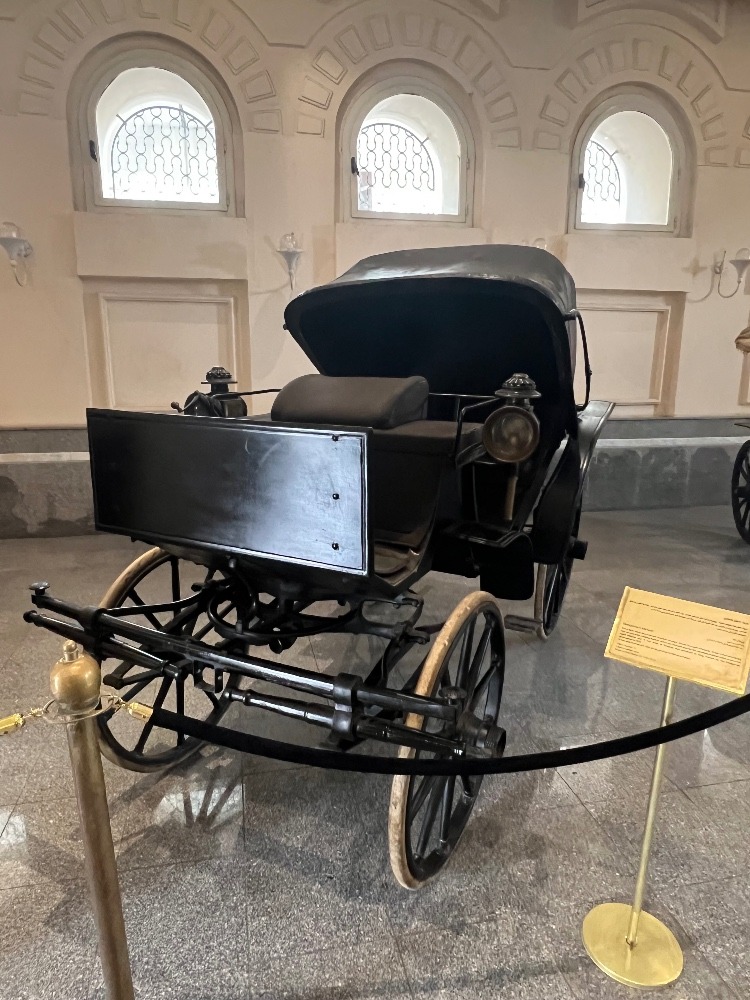
This is a two-wheeled, open carriage drawn by a single horse or a pair of horses and driven by two coachmen. It was used mainly for training young horses and belonged to the reign of King Fouad I.
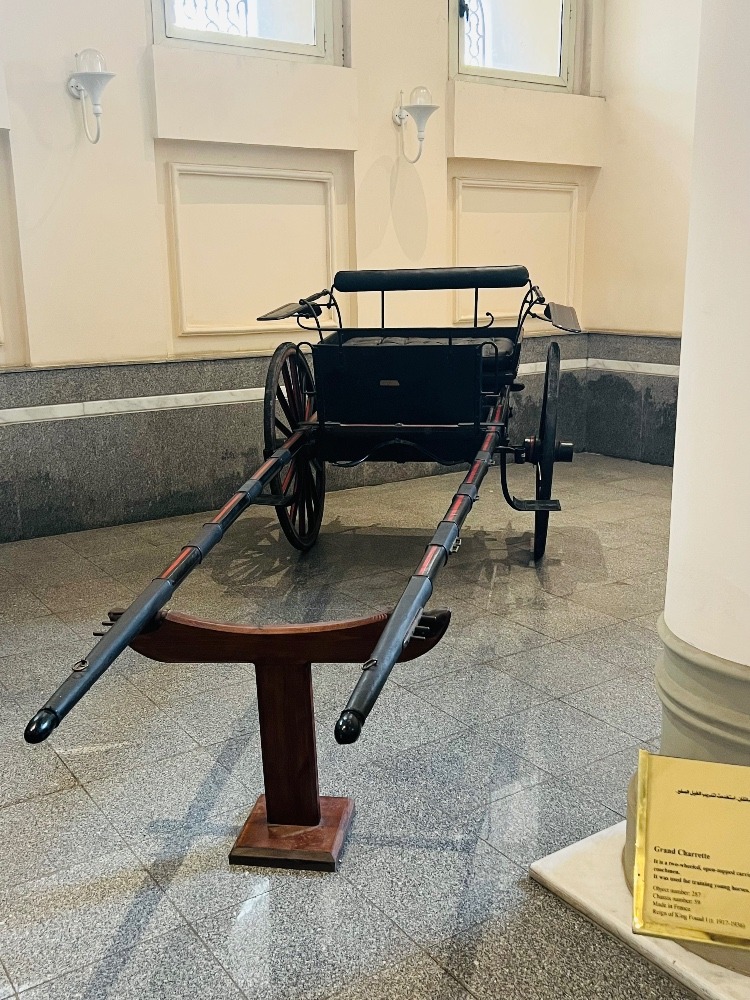
After leaving this hall, we went straight to the Gamallon Hall, which displays the rarest types of vehicles. The hall was filled with different vehicles that were used to receive foreign dignitaries visiting Egypt and in the inaugural ceremony of the parliament.
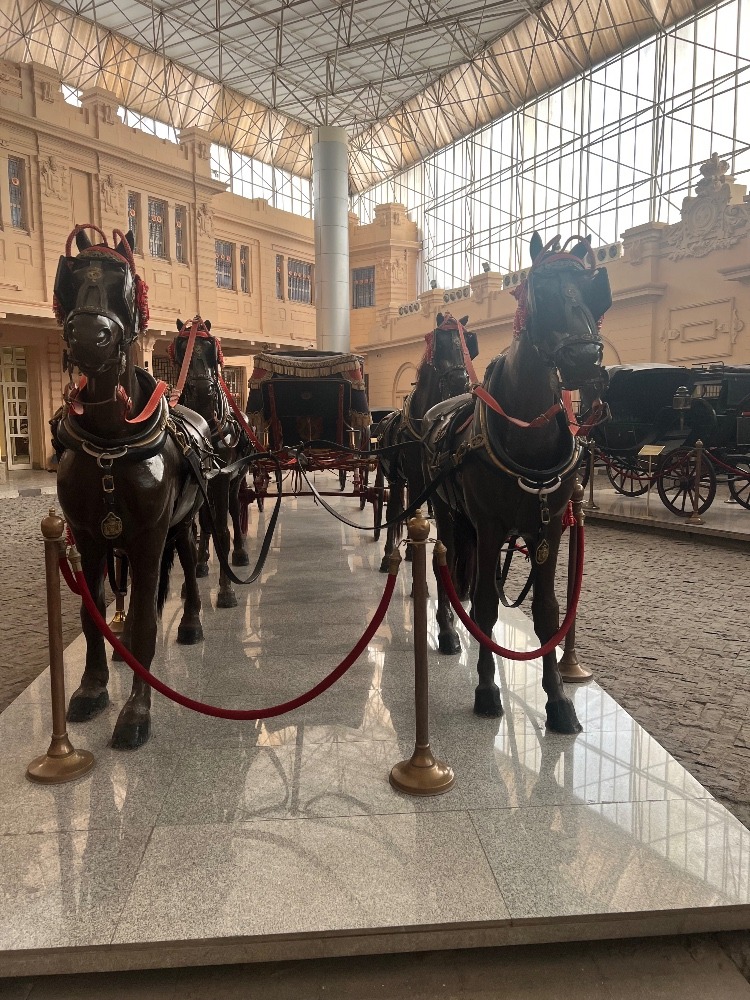
Then there was the Antikkhana Hall, one of the museum’s other five main halls, that featured chariots and vehicles that were gifts to Mohammed Ali Pasha, the founder of modern Egypt. In the hall, there was a lot to see because Ali and his family loved horses. They used to travel on these magnificent chariots for a variety of events, such as weddings and governmental ceremonies.
We then headed to the Reception Hall, which provided a screen to display documentaries on the time of Khedive Ismail and other royalties. There was also the Hosan Hall, which included a group of costumes that were used by employees of the royal vehicles and chariots. Finally, the Royal Events Hall included a group of chariots that were used by several Khedives on official occasions in addition to oil paintings of kings, queens, princesses, and princes. Such as this oil portrait of Khedive Tawfiq in his ceremonial suit. Khedive Tawfiq held several positions; such as the President of Privy Council, the Minister of Interior and the Minister of Public Works and became ruler of Egypt in 1879.

This is another oil painting of the Wali or ruler of Egypt and Sudan, Abbas Helmy I who was the grandson of Mohammed Ali Pasha; you can even see Ali’s mosque in the background.
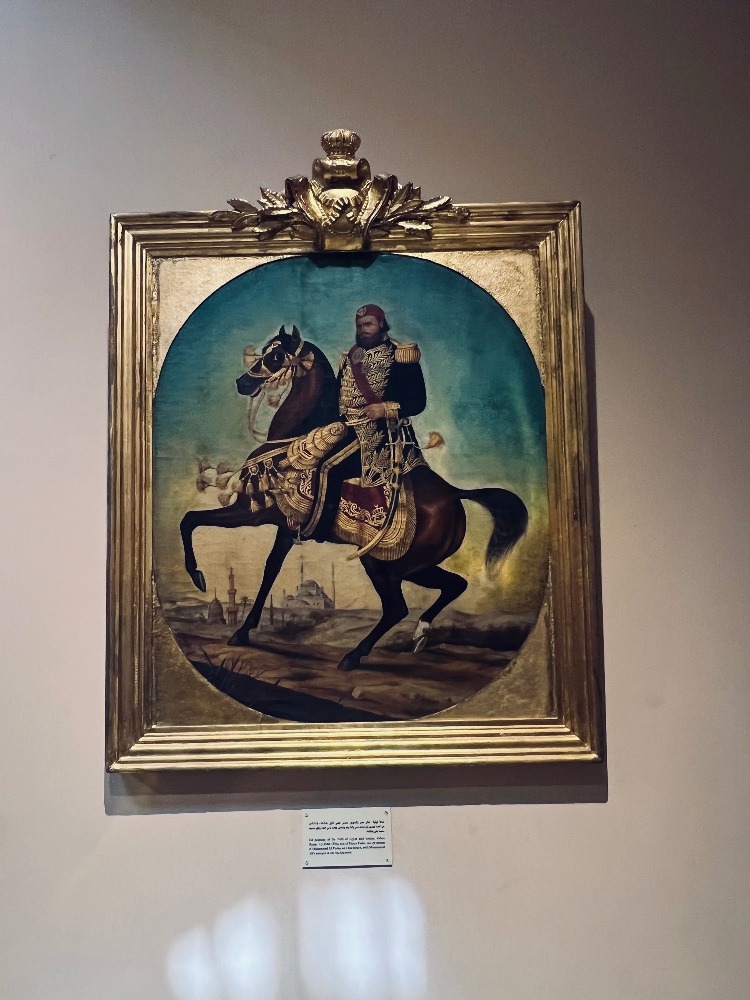
Overall, the museum featured various antiquities that were worth the watch. We wished though there would be more trained personnel to show us around the museum and talk to us more about its history. Also, tickets were expensive and the museum wasn’t fully operational as some artifacts are still in a restoration phase. For history buffs, however, the Royal Chariots Museum is definitely the place to witness unique carriages used by royal kings and queens.


